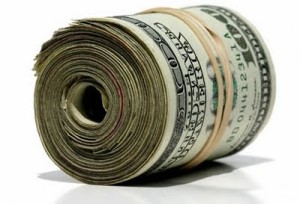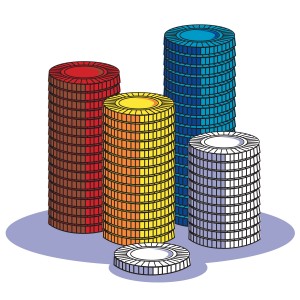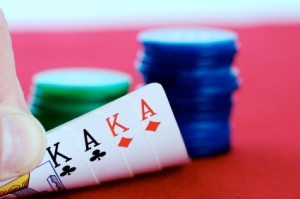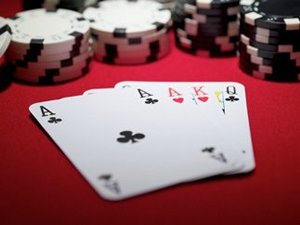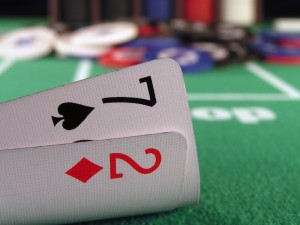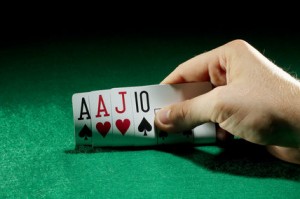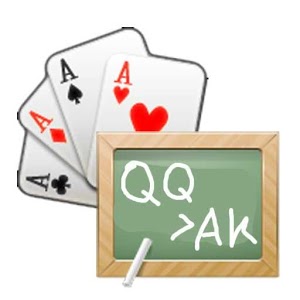Flameproof your bankroll
You write a poker book and everybody gets the wrong impression. You see, I don’t actually advocate gambling; I just figure that if you are going to do it anyway, you might as well do it right. I also figure that you might as well play Omaha, the game of champions. But, frankly speaking, it doesn’t do you any good to sit down in a poker game if you know you are going to get pasted.
The thing is, no game ignites flammable bankrolls faster than pot-limit Omaha (PLO). And when I say flammable, I am talking about a player finding himself constantly overplaying his bankroll. The problem with PLO is that even some of the most skilled poker players making the transition to PLO are a favorite to go flat broke, due to a lack of proper bankroll management.
There are a couple of reasons for this:
1. PLO requires a much larger bankroll than most players expect.
2. Most players have no idea what they are walking into.
The Bankroll Issue
PLO is inherently a much more volatile game than no-limit hold’em, as the money goes in faster, more often, and on much slimmer margins in PLO than in no-limit hold’em. For one thing, set-versus-big-draw matchups, in which nobody is a clear favorite, are not uncommon in PLO. Meanwhile, there are few cheap mistakes to be made in PLO. The fact is that if you don’t learn to get away from undertrips or bottom set, and consistently draw to sucker wraps, or constantly overplay the bare nut straight, you are going to wind up paying for it with your stack over and over again.
As such, you need a larger bankroll to play PLO than no-limit hold’em, both to account for the natural volatility of a game and to give you a margin of safety for those occasions when you do make big mistakes. So, while a proficient $2-$5 no-limit hold’em player might be able to get by on a 20 to 30 buy-in bankroll — or about $10,000 to $15,000 for a $500 max buy-in game — that same player might need more like 30 to 40 buy-ins for a comparably sized PLO game, assuming competency.
That brings us to the next issue.
The $2-$5 Problem
The second problem — and often the bigger one — is that most players have no idea what they are getting into, particularly when it comes to live play.
Most players coming from $2-$5 no-limit hold’em think they need to play $2-$5 blinds PLO. These players often scoff at the idea of playing a $1-$2-$5 game or a $1-$2 blinds PLO game with a $5 bring-in and a $500 max buy-in. (“I’ve been playing $2-$5; I can’t go back to $1-$2!”) But the reality is that these games often play bigger than the $2-$5 no-limit hold’em games they’ve been playing; meanwhile, a $2-$5 PLO game tends to play bigger than $5-$10 no-limit hold’em, and sometimes significantly so. The result is that these players, by default, wind up getting into games that they simply cannot afford to play.
Moreover, the words “$2-$5” can mean a lot of different things.
The first live PLO game I ever played was a $5-$5 blinds game at the Ameristar Casino in St. Louis. This was a bit of a culture shock for me, because while I’ve played primarily live poker for the past five years, I first learned to play PLO online. And this game was nothing like the $1-$2 online games with a 100 big blinds max buy-in, where everybody limps in, with only an occasional preflop raise. In the game at Ameristar, there would often be several $2,000 stacks, maybe one or two $5,000 stacks, and one $10,000 stack (and it was always the same group of seven or eight guys). As a result, the $10 straddle would always be out (effectively making it a $5-$5-$10 game), and it was usually $50 or $60 to see the flop, and sometimes $150 or $200.
My $1,000 buy-ins seemed somewhat inadequate in the face of all of that action.
(Side note: Today, we have a much deeper player pool in St. Louis, and the game is now played with $5-$10 blinds across the river at Harrah’s).
But the second game I came across was a $2-$5 blinds game at Casino Aztar Evansville, where most of the players bought in for $500 or less. In this game, few players straddled, and there were a lot of $5 flops, with maybe an occasional $20 or $25 raise preflop; basically, it was similar to the small-stakes online games.
Since that time, I’ve played in a lot of $5-blind PLO games that lie somewhere in between those two extremes. The key point to be made is that stack size has a fairly dramatic impact on the game. In effect, deep stacks can turn a $2-$5 game into a $2-$5-$10 game, which affects both your proper buy-in size and, in turn, your bankroll requirement. For example, an $800 buy-in might be sufficiently deep at 160 big blinds for a $2-$5 game in which nobody straddles, but will be a decidedly medium stack at effectively only 80 big blinds in a $2-$5 game in which the straddle is always out.
Meanwhile, a $2-$5-$10 game with $5,000 stacks is going to be much more aggressive preflop than a $2-$5-$10 game in which the average stack is less than $1,500, or 150 times the straddle. As such, while 30 to 40 buy-ins might be adequate for the smaller game, you might need more like 40 to 50 buy-ins — if not more — for the game with deeper stacks.
The Bankroll Schedule
Following is a bankroll schedule with a list of typical games and the bankroll size required to play at each level. The assumption is that you buy in for the maximum in games with a max buy-in, which is often 100 big blinds in online play (though it should be more like 150 or 200 big blinds for PLO). For a $2-$5 game with a $1,000 max buy-in – in which the straddle is infrequent – the bankroll figure is based on about an $800 to $1,000 buy-in (I went ahead and rounded $750 up to $800 and 30 x $800 up to $25,000, as this is not an exact science, but a conceptual generalization). For games without a max buy-in, it is assumed that you buy in for 150 times the straddle, or $1,500 in the case of the $2-$5 games in which the straddle is either expected or mandatory. (Note: I recommend buying in for at least 100 times the expected big blind, but prefer to sit with 150 times the expected big blind, if not more.)
These figures also assume that you play proficiently, and generally play the way that is described in my book Pot-Limit Omaha: The Big Play Strategy, which is to say, responsibly before the flop. (If you are a maniac like my buddy Luke, double the requirements, not the stakes!)
Also note that buying in short does not reduce the overall bankroll requirement; doing so actually increases the number of required buy-ins, as playing with shorter stacks hampers your ability to win pots without a showdown, which in turn increases volatility.
This article was originally written by Jeff Hwang. Jeff Hwang is a semiprofessional player and author of Pot-Limit Omaha Poker: The Big Play Strategy. His latest book is Advanced Pot Limit Omaha Vol.1 and will be releasing Vol 2. Both Omaha books published with Dimat Poker Books. He is also a longtime contributor to the Motley Fool. You can check out his website at JeffHWang.com
Submit your review | |

